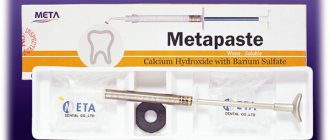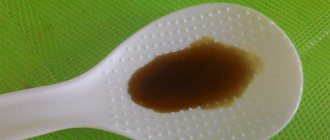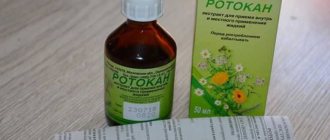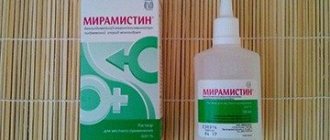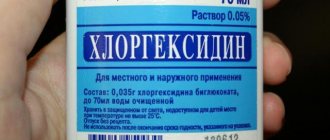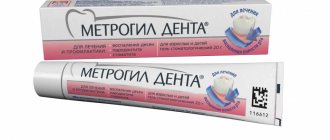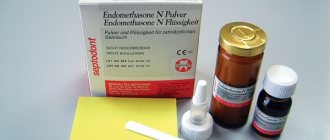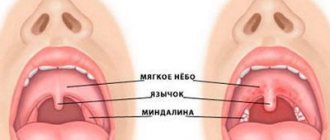Ketorol for toothache is one of the most powerful drugs that can relieve you of pain.
It has the following advantages:
- High degree of efficiency.
- Performance.
- Affordability.
- Possibility of relieving even very severe pain.
- Duration of effect.
The main disadvantage of Ketorol is the list of possible side effects, which is quite impressive:
- Disturbances in the functioning of the digestive system, which can be expressed in the form of feelings of nausea, pain in the stomach, profuse vomiting, lesions of the mucous membrane, diarrhea or excessive gas formation.
- Disturbances in the functioning of the kidneys.
- Disturbances in the functioning of the central nervous system, which can lead to insomnia or drowsiness, causeless deterioration in mood, dizziness or headaches.
- Increased liver size.
- Inflammations affecting the biliary tract.
- Changes in the chemical composition of urine, frequent urination.
- Changes in the chemical composition of the blood, an increase in the number of platelets.
- Difficulty breathing.
- Increased blood pressure.
- Increased body temperature.
- The occurrence of edema.
- Acute allergic reaction.
Will it help with toothache?
The pharmacological drug "Ketorol" can help even with severe toothache, but some of its features must be taken into account:
- The product relieves pain, but does not solve the problem that caused it.
- If you have dental diseases, they may continue to progress without symptoms, so a visit to a specialist is required.
- The principle of action is based on reducing inflammatory processes and blocking a number of nerve impulses that stop entering the central unequal system, due to which the toothache goes away.
- Before using the drug to treat toothache, you should carefully read the instructions for it or consult a specialist.
What dosages should be taken?
Attention! Ketorol tablets are recommended to be taken during severe pain. If you use the drug during chronic pathological processes, then the effectiveness in these cases will be low.
Usually, if acute pain occurs, it is recommended to take one tablet. If suddenly after a few hours the pain reappears, you can take another pill. But you should not delay treatment; pain is the first signal of a pathological process. Ketorol will only reduce pain temporarily, but will not eliminate the source of inflammation itself.
Ketorol tablets are used for temporary relief of toothache.
Recommendations for the use of tablets:
- It is recommended to take no more than 4 tablets per day;
- Tablets should be taken one at a time in the morning, at lunch, in the evening and before bedtime;
- The break between tablets should be at least 4 hours;
- Ketorol should be taken no more than 5 days in a row;
- To make it easier to take the tablet, it is recommended to take it with plenty of water;
- Before taking the drug, it is not recommended to eat fatty foods.
Basic rules for using injections:
- A single dosage should be 15-30 mg;
- The interval between injections is at least 5 hours;
- The daily dose should not exceed 90 mg.
How long does it last?
Today, the drug "Ketorol" is available in the form of tablets for oral administration, as well as a solution for intramuscular or intravenous administration. All of these remedies can help with toothache; regardless of the chosen form, the duration of action is from 4 to 5 hours.
This indicator is influenced by the state of the body, the correct dosage calculation and compliance with the basic rules of administration.
During the effect of the drug, it is not allowed to take additional doses, since this will not enhance its effect, but can lead to excessive concentration of the drug in the body and a number of negative consequences.
Release form and components
Ketorol is produced in different forms. In the pharmacy it can be found in several forms:
- In the form of tablets;
- In gel form;
- In the form of liquid for injection.
Three forms of release of ketorol: tablets, injections, gel.
Tablets are available in round shape. The top is covered with a green shell. The tablets are placed in cell-type blisters of 10 pieces. One cardboard package may contain 2 blisters. The gel has a white structure. Placed in an aluminum tube. The volume of the tube is 30 grams. It can also be produced in the form of a clear liquid. The liquid is contained in ampoules of 1 mg. The ampoules are placed in a plastic cell package of 10 pieces. Components:
- The active substance is ketorolac. One tablet contains this substance in a volume of 10 mg, 1 ml of solution - 30 mg, 1 gram of gel - 20 mg;
- Additional components:
- Tromethamine;
- Propylene glycol;
- Purified water;
- Flavor;
- Ethanol;
- Glycerol;
- Carbomer;
- Fine crystalline cellulose;
- Lactose;
- Corn starch;
- Magnesium stearate;
- Silica;
- Hypromellose.
How to use?
When taking the drug "Ketorol" to eliminate toothache, the following rules must be followed:
- The dosage is calculated in each case individually depending on the severity of pain, as well as the age and body weight of the patient. At the same time, it must be remembered that no more than 10 mg of the drug is allowed to be taken at a time, and the maximum daily dose is 40 mg.
- For persons under 18 years of age and over 65 years of age, only minimal doses of the drug are used.
- To achieve the fastest effect, intravenous solutions are used, which allows you to obtain the maximum rapid concentration of the main active substance in the blood: this takes no more than 5-10 minutes.
- Tablets intended for oral administration should be washed down with plenty of plain water and should not be chewed. It is also recommended to avoid eating foods high in fat before and after taking the pills, as they can reduce the effectiveness of the drug and the speed of its action.
Ketorol®
Often - more than 3%, less often - 1-3%, rarely - less than 1%.
From the digestive system:
often (especially in elderly patients over 65 years of age with a history of erosive and ulcerative lesions of the gastrointestinal tract) - gastralgia, diarrhea; less often - stomatitis, flatulence, constipation, vomiting, feeling of fullness in the stomach; rarely - nausea, erosive and ulcerative lesions of the gastrointestinal tract (including with perforation and/or bleeding - abdominal pain, spasm or burning in the epigastric region, melena, vomiting like “coffee grounds*”, nausea, heartburn and etc.), cholestatic jaundice, hepatitis, hepatomegaly, acute pancreatitis.
From the urinary system:
rarely - acute renal failure, lower back pain with or without hematuria and/or azotemia, hemolytic uremic syndrome (hemolytic anemia, renal failure, thrombocytopenia, purpura), frequent urination, increased or decreased urine volume, nephritis, edema of renal origin.
From the senses:
rarely: hearing loss, ringing in the ears, visual impairment (including blurred vision).
From the respiratory system:
rarely: bronchospasm or dyspnea, rhinitis, laryngeal edema (shortness of breath, difficulty breathing).
From the CHC side:
often - headache, dizziness, drowsiness; rarely - aseptic meningitis (fever, severe headache, convulsions, stiffness of the neck and/or back muscles), hyperactivity (mood changes, anxiety), hallucinations, depression, psychosis.
From the cardiovascular system:
less often - increased blood pressure, rarely - pulmonary edema, fainting.
From the hematopoietic organs:
rarely - anemia, eosinophilia, leukopenia.
From the hemostasis system
: rarely - bleeding from a postoperative wound, nosebleeds, rectal bleeding.
From the skin:
less often - skin rash (including maculopapular rash), purpura, rarely - exfoliative dermatitis (fever with or without chills, redness, thickening or peeling of the skin, swelling and/or tenderness of the tonsils), urticaria, Stevens-Johnson syndrome, Lyell's syndrome.
Local reactions
Less common: burning or pain at the injection site.
Allergic reactions:
rarely - anaphylaxis or anaphylactoid reactions (change in facial skin color, skin rash, urticaria, skin itching, tachypnea or dyspnea, swelling of the eyelids, periorbital edema, shortness of breath, difficulty breathing, heaviness in the chest, wheezing).
Others
: often - swelling (face, legs, ankles, fingers, feet, weight gain); less often - increased sweating, rarely - swelling of the tongue, fever.
Contraindications
Before taking this drug "Ketorol", you must make sure that there are no following contraindications:
- Tendency to an allergic reaction, individual intolerance to a given drug or individual components that make up its composition.
- Disturbances in the blood circulation process in the body.
- Dehydration of the body, regardless of the reasons for its occurrence. For this reason, Ketorol should be taken with extreme caution in the presence of diarrhea.
- The presence of stomach or duodenal ulcers, especially during their exacerbation.
- Some forms of colitis require prior consultation with your doctor and obtaining appropriate permission from him.
- Poor blood clotting, as this can lead to a number of serious complications if side effects of the drug occur.
- The presence of diseases that impair the functioning of the kidneys or liver.
- Concurrent use of other pharmacological drugs that have an analgesic effect and have a similar composition.
- The rehabilitation period after surgical interventions, since in this case the risk of bleeding increases.
- Pregnancy at any stage and breastfeeding period. To date, not a single laboratory study has been conducted that would provide reliable information about the effects of the drug components on the fetus or the composition of mother's milk. However, the characteristics of its impact and chemical composition suggest that the effect may be negative and pose a potential threat.
- Age under 16 years.
Indications and contraindications for use
In order not to cause harm, it is important to know what ketorol helps with. Most often, ketorol, the instructions for use confirms this, is used as a symptomatic remedy to relieve headaches, dental and menstrual pain, as well as pain in the joints. In complex therapy, the drug is prescribed for the development of cancer and in the postoperative period.
The medicine is indicated to alleviate conditions in the following pathologies:
- Rheumatoid diseases.
- Spinal diseases and radiculitis.
- Ligament ruptures and muscle sprains.
Ketorol, like any non-steroidal drugs, is prohibited for use in the presence of diseases of the gastrointestinal tract. Otherwise, the risk of gastric bleeding increases. The drug is not prescribed to patients under 16 years of age or during pregnancy and lactation. You should stop using the medicine if you are hypersensitive to the components of the drug, as well as if you have the following pathologies:
- Bronchial asthma.
- Hyperkalemia.
- Heart failure.
- Liver and kidney diseases.
- Stroke.
There are other diseases for which the doctor recommends taking the drug with caution. These are chronic hypertension, diabetes mellitus, various nervous system disorders, etc.
Ketorol, for which a prescription is required, should not be taken with a number of other medications:
- Pentoxifylline.
- Acetylsalicylic acid.
- Anticoagulants.
- Lithium salts.
- Probenecid.
When taking the drug simultaneously with alcoholic beverages, the risks of intoxication of the body increase.
Analogs
Sometimes this remedy may not be suitable for everyone, so it can be replaced with analogues. There are a large number of analogues for this medicine, the most common are the following:
- Ketalgin;
- Ketanov;
- Ketorolac;
- Ketorodol;
- Ketofril;
- Dolomin;
- NATO;
- Thorolak.
Some analogues of ketorol with similar properties
In any case, it is worth remembering that the use of Ketorol and its analogues only helps to reduce pain in the tooth, but does not eliminate the disease itself. It is best to use this remedy only when absolutely necessary. Many doctors recommend that if pain occurs, take this painkiller and immediately go to see a dentist so that he can identify the source of the pain and eliminate it.
For what indications is it not recommended to take it?
First of all, Ketorol is not recommended for use by patients who have systematic chronic diseases. In these cases, it is recommended to choose a different drug for pain relief, but you should also consult with the appropriate doctor. In addition, it is not recommended to take Ketorol under the following conditions:
- It is not recommended for women to take during pregnancy and while breastfeeding;
- For peptic ulcers of the stomach and duodenum;
- During renal, liver, heart failure;
- With reduced blood clotting;
- During bronchial asthma and in the presence of polyps in the nasopharynx;
- If you are allergic to the active ingredient;
- Children and teenagers under 16 years old.
Children under 16 years of age are not prescribed to take ketorol, because has many contraindications.
Side effects
Side effects usually occur when the instructions for use are not followed. Frequent phenomena include the following:
- State of increased drowsiness;
- The occurrence of a slow reaction to stimuli;
- Problems in the functioning of the digestive system - diarrhea, attacks of nausea, vomiting;
- The appearance of swelling of the limbs and face;
- Dizziness;
- Headache attacks;
- Allergic reactions on the skin;
- Allergy to active ingredients.
Skin irritation is an allergy to the drug or its components.
